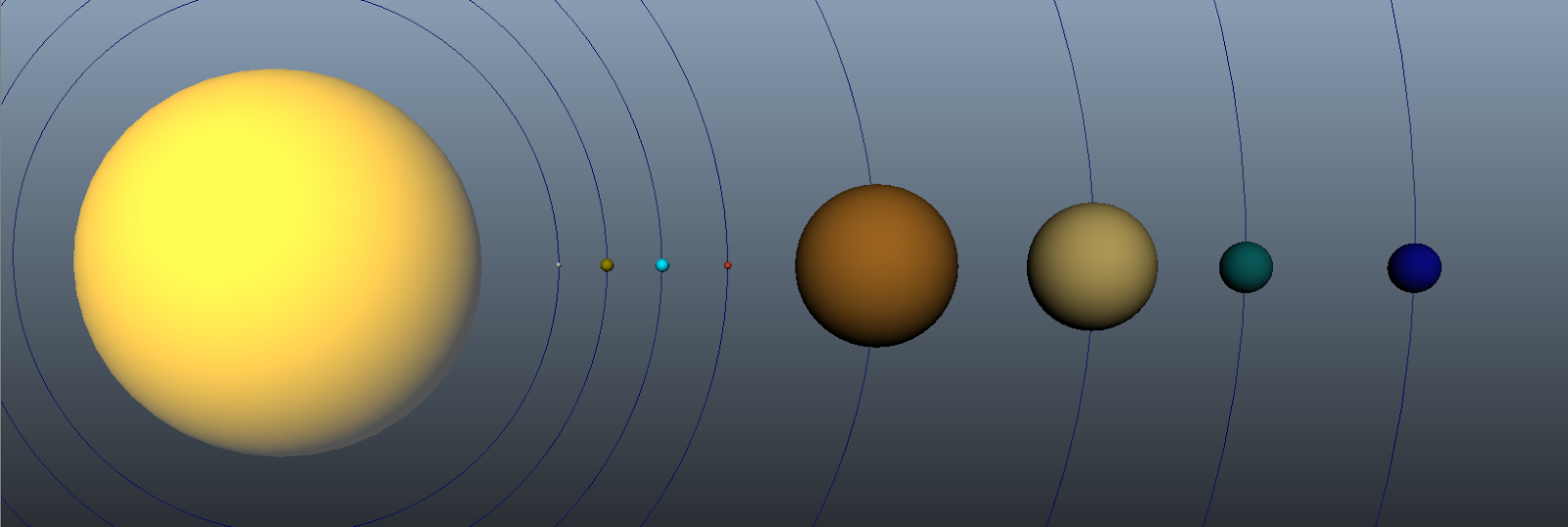After further research regarding our solar system and how planets are located in space, I started creating in Maya a scaled 3D model which will help to the next project presentation.
I used the tool available in this web site to find out the proportions, being the sun the start point: http://www.exploratorium.edu/ronh/solar_system/. I formerly wanted to make a real scale model, but soon realized it wasn't the best way, as the size of the whole solar system is enormous and many of the planets almost invisible at first sight due to its tiny size compared to others such as the Sun. Therefore, I decided to draw all the orbits as closer as possible and make the planets x20 their size, except for the sun, that had to do only x5 its size.
There was also the question about the alignment of the planets, as the report we were handed by our mentor stated the best moment to send the probe from earth to neptune would be when planets are aligned, as their gravities help the probe to move further without wasting to much of its energy. I did some research regarding planets alignment, and found out this only occours with two or three planets at once, as it is extremely difficult that all of them align at the same time and we problably don't even want this to happen: http://sciencequestionswithchris.wordpress.com/2013/08/28/when-do-the-planets-in-our-solar-system-all-line-up/
 | ||||
| Real planetary alignment at ESO's La Silla Observatory, Chile |
Jupiter (top), Venus (lower left), and Mercury (lower right)
 |
| My first attempt for planetary alignment |
 |
| A more realistic alignment |
Finally, and using this more realistic planet alocation for the mission to Neptune, I did a very simple animation to support our project presentation. It is a model representing the probe, which is following a predetermined path from Earth to succesfully reach Neptune. Check out the video on Vimeo http://vimeo.com/112485709